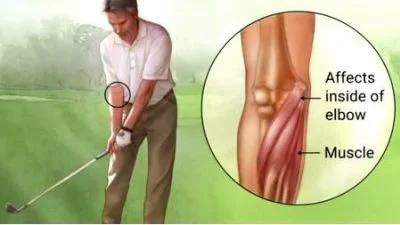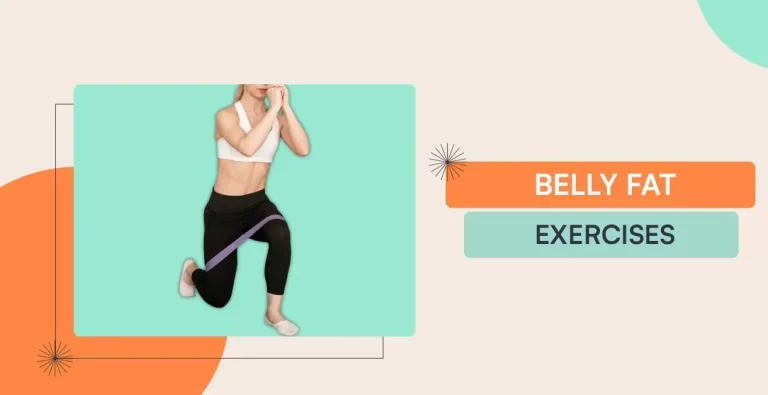Trigger Points in Biceps Muscle
Trigger points in the biceps muscle are localized areas of muscle tightness that can lead to pain, stiffness, and restricted movement in the arm. These points often develop due to overuse, repetitive strain, poor posture, or injury.
The biceps muscle, which plays a vital role in flexing the elbow and rotating the forearm, is particularly vulnerable to trigger points, especially in individuals who engage in repetitive lifting, sports, or desk work. Recognizing and treating these trigger points is essential for alleviating pain and restoring proper arm function.
Trigger points: What Are They?
Trigger points are particular, susceptible, and irritable muscular regions that experience increased contraction, spasm, and reduced circulation due to waste and toxin accumulation. A high concentration of toxins and enhanced nerve sensitivity, which can range from mild aches to acute pains, are caused by poor circulation.
Now, the trigger point itself does not necessarily induce pain simply because it does. The area that causes pain is referred to as a main trigger point. Referred pain, on the other hand, can also appear in locations other than the current trigger site.
Anatomy of Biceps Muscle:

It is a major muscle of the arm.
Origin:
The glenoid, a hollow in the scapula, is where the long head begins. Through a rhythm in the humerus, the big bone of the upper arm, it travels arriving at the shoulder joint to the upper arm.
In conjunction with the long head regarding the internal surface of the arm, the short head broadens from a sticking out on the scapula known as the coracoid.
Insertion:
The two heads taper over the anterior side of the elbow after traveling distally and producing a combined muscle belly and it connects to the radial tuberosity and the forearm fascia.
Musculocutaneous nerve innervation (C5–C6)
Blood supply: Brachial artery branches.
What Effects Do Trigger Points Have on the Biceps?
The long head of the bicep muscles may be overused, which can result in bicep tendon rupture when the muscles give way.
Excessive eccentric force causes the arms to extend rather than flex when the bicep muscle gives way to a tendon tear.
Additional biceps-related problems may be linked to rotator cuff disease and be a prevalent cause of shoulder discomfort.
Given the close relationship between the bicep and rotator cuff, research indicates that the shoulder joints’ repeated strain, friction, and rotation might result in tendinopathy.
Trigger points may eventually form along the bicep muscles as a result. Because trigger point pain can mirror other chronic diseases, diagnosing it can be challenging. The arm must be above the shoulder for trigger points to form along the bicep muscles to produce pain-like sensations. Up until that moment, it results in bicep muscle weakening, stiffness, and pains.
Bicep trigger points are frequently linked to elbow, back, and shoulder pain:
Besides that, the elbow and shoulder joints’ pronation and extension were controlled by the biceps brachii.
In the time frame of the thumb along with the rib cage, it constitutes an intersection that puts on myofascial permanence; this is especially evident when the top part of the body is abducted.
The muscle can contract alongside the triceps brachii to stabilize the elbow and is essential for shoulder stability in dynamic situations.
Trigger Points:
Pain from myofascial trigger points, which often start in the center of the belly, travels immediately distal to the elbow joint, down towards the pronator teres, and up into the anterior deltoid.
According to the neuromuscular therapy hypothesis, compensatory myofascial trigger point creation to generate extra stress results from insufficient core stability and poor neuromuscular efficiency.
Numerous activities, such as repetitive motion injuries, throwing or sports-related activities (like basketball or tennis), carrying heavy things with the palm facing up (like weight training), and playing musical instruments (like the violin or guitar) can cause trigger points to develop in this muscle.
Pain patterns:
Trigger points in your biceps brachii can cause discomfort that travels to the front of your shoulder and down to your elbow.
In addition, you may feel discomfort in your upper back and shoulder side.
In this manner, your biceps might help with,
- Upper arm pain
- Pain in the crest of the elbow
- Pain in front of the shoulder
When trigger points are present, the intensity of the red patches shows how frequently pain is felt in that zone. The more often the discomfort, the deeper the red.
Complaints and symptoms:
You may have discomfort and/or difficulty when you have trigger or sensitive points in this muscle, or if it is simply too tight.
- Arm bending,
- arm abduction, and arm spreading
Activation of Bicep Trigger Points:
- Trigger points in the biceps can result from specific motions and activities.
- You should take care of this muscle if you are an athlete, particularly if you climb, swim, or throw heavy objects, like a baseball player.
- Problems can arise from strong and/or repetitive hand supination, such as while torquing a resistant screw.
- Your biceps may produce issues if you are not accustomed to these motions or if your muscles are not balanced.
Management of trigger point:
Consider the following management techniques:
Self-Control:
- Rest: Avoid doing anything that exacerbates the trigger points.
- Ice pack
- Heat: After ice, provide heat treatment using a heating pad or hot water bottle.
- Stretching: Don’t overstretch the biceps muscle; just stretch it gently.
- Massage: Apply a little pressure on your trigger points.
- Over-the-counter pain relievers: Ibuprofen and naproxen are examples of nonsteroidal anti-inflammatory medicines (NSAIDs), which can help lower pain and inflammation.
- Injections into trigger points: A doctor may provide a local anesthetic or a corticosteroid medication to the trigger point to lessen pain and inflammation.
- Massage: By using deep tissue massage methods, a massage therapist can assist in the release of trigger points.
Treatment with physiotherapy:
Physical therapy: To help you manage trigger points and increase your flexibility, a physical therapist can teach you particular stretches and exercises.
Bicep trigger points can be effectively treated with physiotherapy. The following are some typical physiotherapy methods that might be applied:
Manual therapy involves using hands-on techniques to release trigger points, enhance muscular flexibility, and lessen discomfort.
Methods might consist of:
Massage: Muscle tension and soreness can be reduced by deep tissue massage.
Myofascial release: This method releases trigger points by applying pressure to the fascia, the connective tissue that envelops muscles.
Trigger point therapy: To relieve pain and stress, pressure is applied directly to the trigger point.
Stretching: Stretching can assist to increase muscular flexibility and ease biceps tightness. You can learn specialized biceps stretches from your physiotherapist.
Strengthening activities: By increasing muscular strength and stability, strengthening exercises can help avoid trigger points in the future. A customized workout regimen can be created for you by your physiotherapist.
Electrotherapy: To lessen pain and inflammation, electrotherapy methods like electrical stimulation and ultrasound may be employed.
Dry needling: To relieve tension and encourage healing, dry needling is putting tiny needles into the trigger point. A certified physiotherapist uses this approach.
The following stretches can be used to assist control bicep trigger points:
Wall Stretch:

- Keep your distance from a wall at about arm’s length.
- With your palm facing front, raise your arm to shoulder height.
- Biceps may be stretched by leaning forward and putting your hand against the wall.
- After 30 seconds of holding, let go.
Doorway Stretch:

- Stand facing a doorway with both of your hands pointing towards the direction and your arms at shoulder height.
- Put your hands shoulder-high on the doorframe.
- Advance a small distance till your biceps begin to elongate.
- After 30 seconds of holding, let go.
Lying Biceps Stretch:
- While sleeping on your back, make sure your legs are flat on the ground and curled.
- Elevate your arm higher than your head while keeping your elbow straight.
- Using your other hand, gently draw your arm towards your head until your biceps start to expand.
- After 30 seconds of holding, let go.
Bicep trigger points can be effectively managed with massage.
You can attempt the following massage techniques:
Self-Massaging:
Using a foam roller or tennis ball, place it beneath the biceps’ tight spot and roll it back and forth while exerting light to moderate pressure.
Compression: Firmly push on the trigger spot with your thumbs or fingertips. As necessary, repeat.
Fingertip pressure: For 30 to 60 seconds, firmly press on the trigger point with your fingertips. Although you could have some soreness, it shouldn’t be too bad.
Friction massage: Apply circular pressure to the trigger spot with your fingertips. This can enhance blood flow and aid in the disintegration of scar tissue.
Expert Massage:

Deep tissue massage: To relieve stress and break up scar tissue, this kind of massage applies intense pressure to the deepest layers of muscle tissue.
For biceps trigger points, the following strengthening exercises may be helpful:
Bicep curls: With your hands facing up, execute bicep curls using tension bands or small weights. As you gain strength, progressively increase the number of repetitions from a few at first.
With your palms facing each other, you may execute hammer curls, a type of bicep curl. This variant can assist in targeting various biceps muscle fibers.

Triceps extensions: By targeting the muscles opposing the biceps, these workouts can help balance muscular strength and lessen bicep strain.

Wall push-ups: Keep your elbows close to your torso while performing push-ups while leaning against a wall. Your shoulders, triceps, and chest may all be strengthened with this low-impact workout.

Conclusion
The bicep is a big, thick muscle that surrounds the joints of the upper arm and has two attachments that provide motion. To stabilize and maintain the shoulders, the bicep muscles collaborate with the coracobrachialis muscle. Trigger points may form along the bicep muscles as a result of overuse and injury, resulting in transferred pain to the arms and shoulders.
When this occurs, the muscles stiffen and may hurt when performing everyday tasks like lifting their arms or participating in sports. Since they are unable to participate, many people get unhappy when this occurs. Thankfully, several methods can help lessen arm discomfort and avoid further damage. Arm mobility for the biceps can be enhanced by gently stretching and massaging the muscles to relieve trigger points.
FAQs
How do I release my bicep trigger point?
Simply push down on the knot or trigger point for five to ten seconds, then let go.
What signs of trigger points in the biceps are present?
When the tendon is passively extended, during resisted supination, and during elbow flexion, this ailment typically presents as a discomfort above the bicipital groove. Additionally, it results in stiffness after activity and soreness and sensitivity along the tendon’s length.
How can trigger points be eliminated?
To lessen inflammation, apply ice, particularly if the discomfort returns after exertion.
Knots can be released by massaging the trigger point.
Anti-inflammatory drugs sold over-the-counter aid in the relief of muscular soreness.
Steer clear of activities that trigger flare-ups.
Decrease tension.
Is weakness a result of trigger points?
In pain-free individuals, they may alter the patterns of muscular activation or result in muscle weakening.
How can a trigger point be massaged?
How to Do an At-Home Trigger Point Massage: Using your thumb or finger, apply pressure to the tight area, which frequently feels like a marble.
Does physical activity alleviate trigger points?
Dry needling and the other therapies outlined above are excellent short-term solutions, but strength training for the affected region is the only way to get long-term relief.
Is it harmful to stretch for trigger points?
Stretching too hard might damage the muscle fibers and exacerbate the trigger point.
References
- Winer, J. (2022b, May 13). Treating Trigger Points in the Biceps. Niel Asher Education. https://nielasher.com/en-in/blogs/video-blog/treating-trigger-points-in-the-biceps?srsltid=AfmBOoojwQIpIsaIOeG0WeQdP17UV2RTcM9iVTM-tjs8VbivppMO697T
- DCcCST, A. J., & DCcCST, A. J. (2022, September 27). The Biceps Being Affected By Trigger Points. El Paso, TX Doctor of Chiropractic. https://dralexjimenez.com/biceps-trigger-points/







